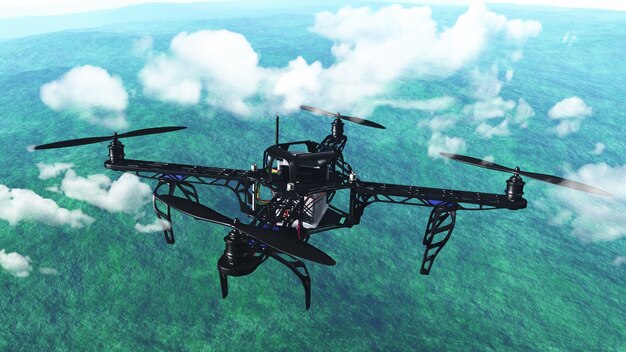
Sponsored article
Drones have rapidly become a common part of our technological landscape, offering numerous benefits across various sectors. However, with this rise in popularity comes the increased risk of unauthorized access to restricted airspaces, posing significant safety and security concerns. To address these issues, it is crucial to explore the current challenges, technology solutions, and regulatory measures that can prevent unauthorized drone intrusions and protect our airspace effectively.
The rapid proliferation of drones has brought about significant airspace security challenges, particularly the rise in incidents involving unauthorized drones entering sensitive areas. These drone threats pose substantial risks, as they can interfere with commercial air traffic, compromise privacy in restricted zones, and even be utilized for malicious activities. Monitoring and controlling these unauthorized drones is no small feat for authorities, as traditional radar systems are not always equipped to detect low-flying, small UAVs. Effective solutions require an innovative approach, with technologies such as GNSS spoofing and detection proving essential in safeguarding airspace.
These technologies offer advanced capabilities to counteract drone threats, providing the necessary tools for authorities to secure vulnerable airspace. Challenges in managing drone intrusions include:
In response to the growing threat of unauthorized drone intrusions, the field of drone detection has advanced significantly, offering a range of sophisticated technologies designed to safeguard airspace. One notable innovation is the use of radar systems, which have been adapted to detect small, low-flying drones that might otherwise evade traditional air traffic control measures. These radar systems can differentiate between drones and other flying objects, providing accurate and real-time data critical for quick decision-making. Incorporating advanced signal processing techniques, modern radar systems offer a robust solution for early warning systems and proactive airspace management.
Beyond radar, radio frequency (RF) detection plays a pivotal role in anti-drone technology. RF detection systems identify the unique communication signals between a drone and its operator, allowing authorities to pinpoint the location of both devices. Coupled with other advanced anti-drone solutions, such as sensory networks and AI-driven analytics, these technologies form a comprehensive approach to airspace security, ensuring effective detection and neutralization of unauthorized aerial activities, thus maintaining the integrity of controlled airspace environments.
Drone regulations have become increasingly critical in maintaining the integrity of our airspace and preventing unauthorized drone intrusions. Governing bodies worldwide have implemented diverse airspace laws to manage drone usage effectively, ensuring that these devices do not disrupt civil or commercial aviation. These legal measures, such as mandatory drone registration and pilot certification, form the backbone of a structured approach to air traffic management. In many jurisdictions, airspace laws stipulate restricted zones, altitude limits, and operational guidelines, which all contribute to a safer, well-regulated airspace.
Moreover, technological solutions like geofencing have been integrated into the regulatory framework as a defensive layer to automatically prevent drones from entering restricted airspace. By adhering to these legal measures, operators and enthusiasts alike participate in minimizing risks and enhancing the overall safety of the skies. Consequently, strong compliance with drone regulations not only ensures individual accountability but also fortifies the overarching objective of preserving airspace security.